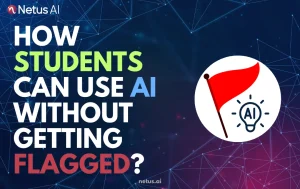
Why Students Are Getting Flagged Even When Writing Honestly | NetusAI
Learn how students can use AI tools for writing and research without getting flagged by AI detectors. Get tips on humanizing content and staying academically safe.

Content writer and editor for Netus.AI
Plagiarism Warning Signs. The internet has brought about significant improvements in the way people access information for educational and professional purposes. However, the ease of acquiring information has also given rise to the problem of plagiarism, which is the act of using someone else’s work without giving proper credit. Plagiarism can take different forms, from copying an entire work to unintentionally reproducing another person’s ideas or expressions. The extensive availability of resources online has contributed to the proliferation of plagiarism, influencing learners and professionals alike.
Plagiarism is not only considered unethical, but it could also lead to legal consequences if a copyrighted work is infringed upon without permission. It is important for educators and institutions to recognize and address the signs of plagiarism, so that they can foster a culture of academic integrity and maintain a fair environment for learners. With the ability to discern common knowledge from unique intellectual property, people can share information effectively without resorting to unethical practices.
The internet has indeed made it easier than ever for students and writers to engage in plagiarism and breach academic integrity. The prevalence of duplicate content, especially in online sources, remains a significant challenge. Different types of plagiarism include:
All these instances can strip an original author of their deserved credit. Although many occurrences result from unintentional mistakes, the impact on reputation and credibility remains severe.
Utilizing a plagiarism checker is a crucial step towards addressing plagiarized content. These tools can detect similarities with earlier published work, allowing for corrections before submission. By being vigilant and ensuring that proper citations are given, plagiarism in academic writing can be mitigated, despite the ease provided by the internet.
While plagiarism refers to the unethical use of someone else’s work or ideas without proper credit, it is not considered a legal offense. On the other hand, copyright infringement involves using copyrighted material without the owner’s permission, which is a punishable act. Therefore, consequences of plagiarism are usually limited to academic or professional sanctions. However, copyright infringement can lead to legal consequences, such as fines or penalties.
It is crucial to prevent plagiarism and respect intellectual property rights to avoid any complications following the submission or publication of your work.
Detecting and addressing plagiarism is essential for maintaining academic integrity. By being aware of warning signs, educators can help students avoid the pitfalls of plagiarism and encourage original work. The following factors may contribute to plagiarism among students:
Students who struggle with critical thinking may have trouble coming up with original ideas for their research papers or assignments. While it’s common for students to use resources to gather information, they should also develop their own perspectives and findings. Students who fail to create unique content may resort to copying material, which can be easily detected using plagiarism checkers like Turnitin.
The pressure to achieve high grades can lead some students to plagiarize in an attempt to improve their academic standing. Fear of failure or not meeting expectations can cause students to resort to copying assignments from other sources. This approach, however, is never a true solution and can result in severe consequences.
Enrolling in courses that don’t align with a student’s interests can impact their motivation and learning outcomes. When students don’t feel engaged with the subject matter, they may put less effort into their assignments and resort to plagiarism.
Proper citation is crucial for avoiding plagiarism. Students should follow their institution’s citation guidelines, as mistakes can result in unintentional plagiarism. Careful attention to detail can prevent errors in citation formatting, while using tools like Grammarly can assist in proper attribution.
Deadlines play a significant role in academic assignments, and students who don’t manage their time effectively may find themselves rushing to complete their work. In these situations, the temptation to plagiarize can be high. Establishing a consistent routine and breaking tasks into smaller steps can help students maintain progress and avoid last-minute stress.
By understanding these warning signs of plagiarism among students, educators can provide guidance and support to help students develop essential skills for effective research, writing, and proper attribution. Encouraging collaboration while emphasizing the importance of citing sources can promote original work and foster academic success.

Learn how students can use AI tools for writing and research without getting flagged by AI detectors. Get tips on humanizing content and staying academically safe.
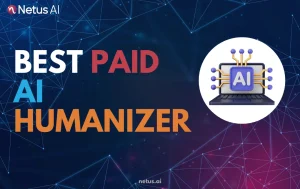
Explore the best paid AI humanizer tools that deliver high-quality, undetectable content. Compare pricing, features, and accuracy to choose the right solution for your needs.
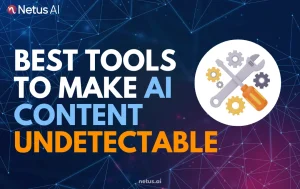
Looking for the best tools to make AI content undetectable? Explore top AI humanizers, bypass tools, and rewriting solutions to pass detectors and sound fully human.
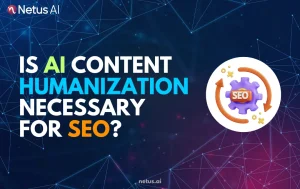
Explore why AI content humanization is essential for SEO success. Learn how human-like rewrites can improve rankings, engagement, and trust with search engines.
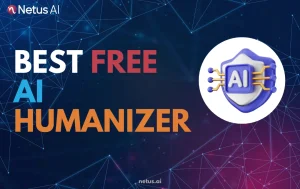
Discover the best free AI humanizer tools to make your content sound natural and bypass AI detection. Compare features, pros, and limitations of top free options.
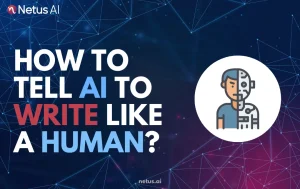
Learn how to prompt AI tools to write like a human. Discover techniques to improve tone, structure, and emotion in AI-generated content for better authenticity and SEO.
@ 2024 Netus AI.